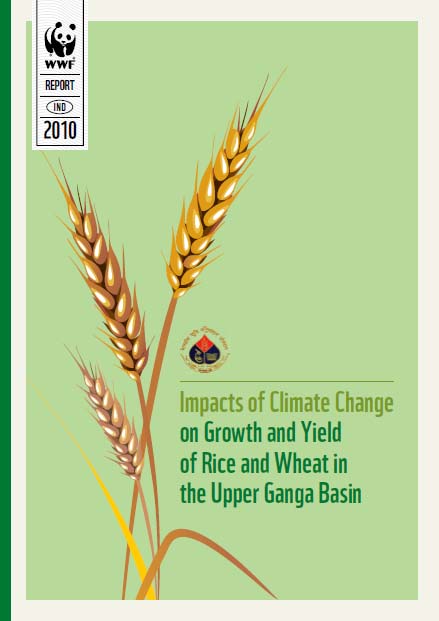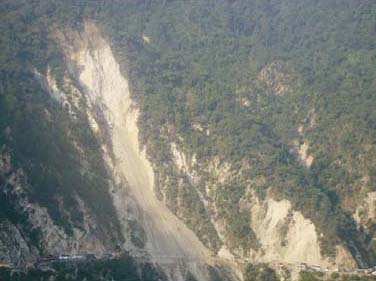/regions/uttarakhand
Uttarakhand
The sector programme and climate change initiatives in Uttarakhand
Posted on 27 Jul, 2011 02:54 PMRecent scientific studies show that global warming is already causing environmental changes that will have significant global economic and social impacts. As the world's 4th largest emitter of greenhouse gases, India has to juggle the imperative demand for economic development with pressures for greater efficiency in the use of energy.
Climate change is a change in the statistical properties of the climate system when considered over long periods of time, regardless of cause. Climate change reflects a change in the energy balance of the climate system, i.e. changes the relative balance between incoming solar radiation and outgoing infrared radiation from Earth. The threat emanates from accumulated green house gas emissions in the atmosphere, generated through long term and intensive industrial growth and high consumption life styles of developed countries.
Intensive field training :Certificate in project planning & grant writing, Grassroots Institute, September 5 – 8, 2011, Nainital
Posted on 26 Jul, 2011 04:47 PM Organizer: Grassroots Institute
Organizer: Grassroots Institute
Venue: Kathgodam, Nainital, India
Description:
This Intensive Field Training (IFT) program will focus more on practice of planning and writing the proposal for getting financial support. The training is fit for NGO managers, government executives and all others who are involved in project management.
HIFEED is looking for personal assistant at Dehradun – Apply by July 10, 2011
Posted on 07 Jul, 2011 08:58 PMContent courtesy: DevNetJobsIndia
Himalayan Institute For Environment, Ecology & Development (HIFEED), a leading voluntary organization of Uttarakhand, is a secular, non profit and non-governmental organization working for upliftment and sustainable development of mountain communities since 1995 without discrimination of race, caste, creed, sex, community and religion.
Impacts of climate change on growth and yield of rice and wheat in the Upper Ganga Basin – A study by Indian Agricultural Research Institute
Posted on 26 Jun, 2011 01:51 PM This report presents the results based on climate change scenarios and identifies potential adaptation strategies. The study is part of the ‘Climate Change Impacts on Freshwater Ecosystems in the Himalayas’ (CCIFEH) project, a joint initiative of WWF-India and WWF-Nepal, supported by WWF-Netherlands and aims to study and understand climate change impacts on freshwater ecosystems, livelihoods and the economy.
This report presents the results based on climate change scenarios and identifies potential adaptation strategies. The study is part of the ‘Climate Change Impacts on Freshwater Ecosystems in the Himalayas’ (CCIFEH) project, a joint initiative of WWF-India and WWF-Nepal, supported by WWF-Netherlands and aims to study and understand climate change impacts on freshwater ecosystems, livelihoods and the economy.
Change in climate conditions and the frequency of natural disasters in recent times has made it imperative to find lasting adaptation solutions for the agriculture sector. Given that almost 60 per cent of the country’s population relies on this sector for its livelihood and that it contributes approximately 15.7 per cent of India’s GDP, an analysis of changes which could impact crop yields and subsequently lead to an instable food security scenario is necessary.
Recent landslides in Uttarakhand - Nature’s fury or human folly – A paper in Current Science
Posted on 21 Jun, 2011 10:22 PM However, increasing anthropogenic intervention in the recent times appears to be contributing to terrain instability in addition to natural factors, as observed by increasing frequency and magnitude of landslides since 1970.
However, increasing anthropogenic intervention in the recent times appears to be contributing to terrain instability in addition to natural factors, as observed by increasing frequency and magnitude of landslides since 1970.
During August and September 2010, Uttarakhand Himalaya witnessed large-scale slope destabilization, particularly along the roads where widening work was in progress leading to huge damage. The cause of regional-scale landslides has been attributed to exceptionally high rainfall in the region during September. When the average rainfall for the month of August and September from 2000 to 2009 is compared with rainfall data of the same period of 2010, it was found that in September 2010, 336 per cent higher rainfall was received by the area. However, the question that arises is: was it unusual rainfall-induced calamity or a result of human intervention?
A perspective of watershed development in the central Himalayan state of Uttarakhand – A paper by Malavika Chauhan
Posted on 25 May, 2011 08:23 AMIt traces the historical growth of thinking on watershed in the region, and highlights issues and influences. Impacts and benefits are discussed in relation to sustainability. The review shows that success in these projects is usually isolated, mostly seen in small micro-watersheds with naturally good water harvesting conditions.
Recession and reconstruction of Milam Glacier in Kumaon Himalaya – A paper in Current Science
Posted on 18 May, 2011 07:29 PMHimalaya is one of the youngest mountain systems on Earth, and has a direct influence on the climate, hydrology and environment of the Indian subcontinent. It is the abode of one of the world’s largest and mostly inaccessible area of glaciers outside the polar region and provides glacier-stored water to the major Indian river basins. Many of the Himalayan rivers are fed by snow and ice melt run-off from snow fields and glaciers.
River bank filtration in Uttarakhand - Blog post by Neelima Garg
Posted on 11 May, 2011 02:30 PMProcess of River Bank Filtration technology
Pumping induces seepage from the surface water into the aquifer and results in quality improvements enroute to the well by natural processes such as filtration, biodegradation, adsorption, redox reactions and mixing. RBF can also occur under natural conditions as a result of an influent river.
National awards for Excellence in Forestry by Indian Council of Forestry Research and Education - Apply by 30th June 2011
Posted on 18 Apr, 2011 08:51 AM Nominations/applications are invited for four “National Awards for Excellence in Forestry by ICFRE“ for the period 2008-2010 on biannual basis. These awards shall be given for original and outstanding notable work/research contribution in the fields of (a) Forest Education (b) Forest Research (c) Forest Extension.
Nominations/applications are invited for four “National Awards for Excellence in Forestry by ICFRE“ for the period 2008-2010 on biannual basis. These awards shall be given for original and outstanding notable work/research contribution in the fields of (a) Forest Education (b) Forest Research (c) Forest Extension.
One of the four awards called “Young Scientists Award in Forestry” shall be given only to the scientist with 40 years or less of age, with work preferably linked to the project(s) of ICFRE.
Indigenous pest management practices prevalent among hill farmers in Uttarakhand – A paper in the Indian Journal of Traditional Knowledge
Posted on 17 Apr, 2011 04:57 PMThis paper in the Indian Journal of Traditional Knowledge aims to describe indigenous pest management (IPM) practices being followed by farmers of Bageshwar district of Uttarakhand and their belief behind following them.With those practices, farmers would manage pests effectively without deteriorating environment. These practices could be very important if incorporated into integrated pest management research to enrich the research process and make it more relevant for the farmers.